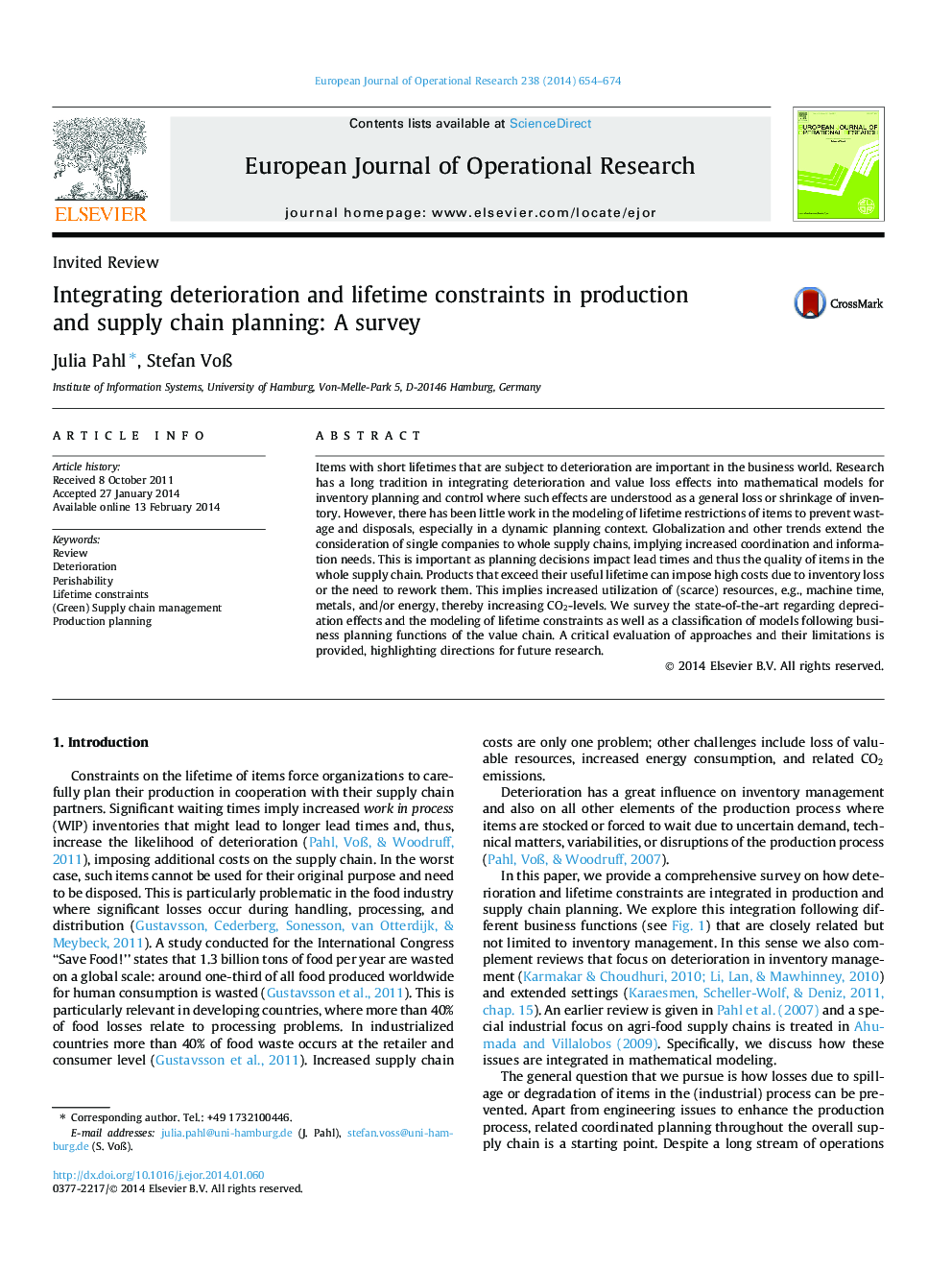| Article ID | Journal | Published Year | Pages | File Type |
|---|---|---|---|---|
| 479654 | European Journal of Operational Research | 2014 | 21 Pages |
•We discuss depreciation and item lifetimes in production and supply chain planning.•We consider aspects of closed loop supply chain management.•Lifetime constraints to avoid wastage and spoilage are rarely considered.•Approaches with multiple products and related setup times and costs are rare.•We highlight further aspects where more research is needed.
Items with short lifetimes that are subject to deterioration are important in the business world. Research has a long tradition in integrating deterioration and value loss effects into mathematical models for inventory planning and control where such effects are understood as a general loss or shrinkage of inventory. However, there has been little work in the modeling of lifetime restrictions of items to prevent wastage and disposals, especially in a dynamic planning context. Globalization and other trends extend the consideration of single companies to whole supply chains, implying increased coordination and information needs. This is important as planning decisions impact lead times and thus the quality of items in the whole supply chain. Products that exceed their useful lifetime can impose high costs due to inventory loss or the need to rework them. This implies increased utilization of (scarce) resources, e.g., machine time, metals, and/or energy, thereby increasing CO2CO2-levels. We survey the state-of-the-art regarding depreciation effects and the modeling of lifetime constraints as well as a classification of models following business planning functions of the value chain. A critical evaluation of approaches and their limitations is provided, highlighting directions for future research.
